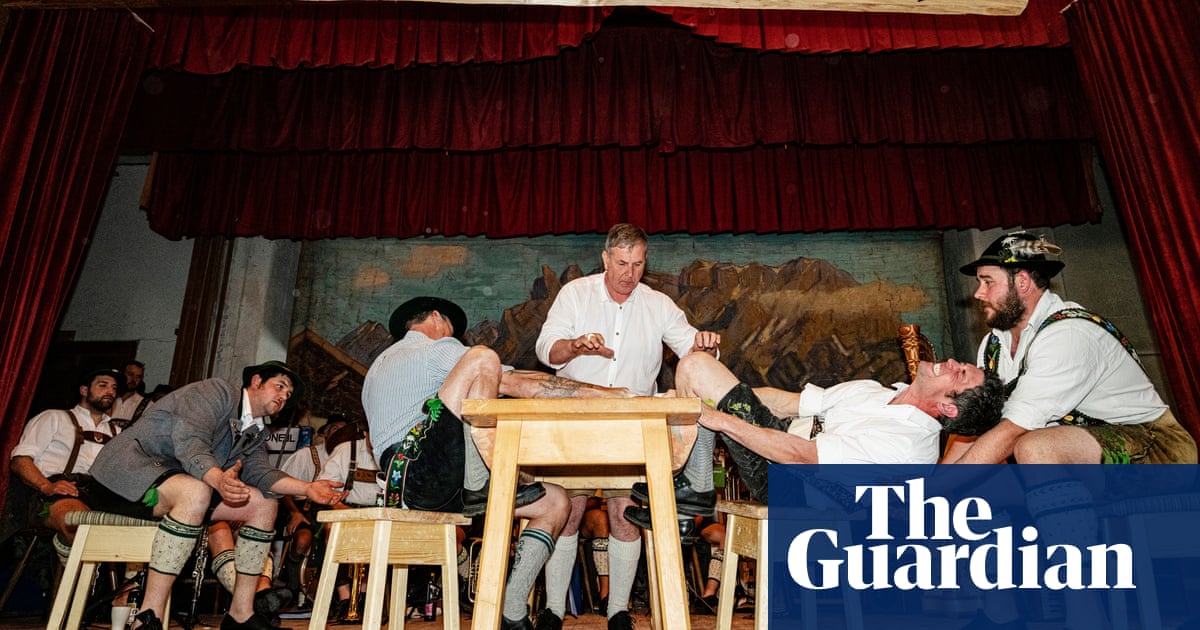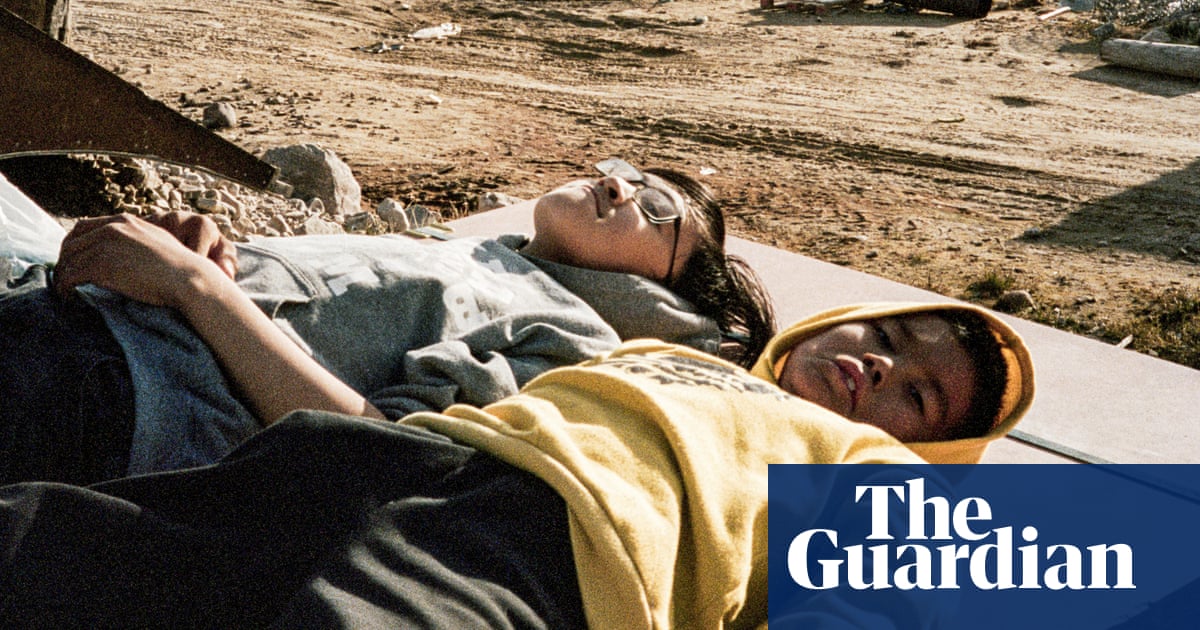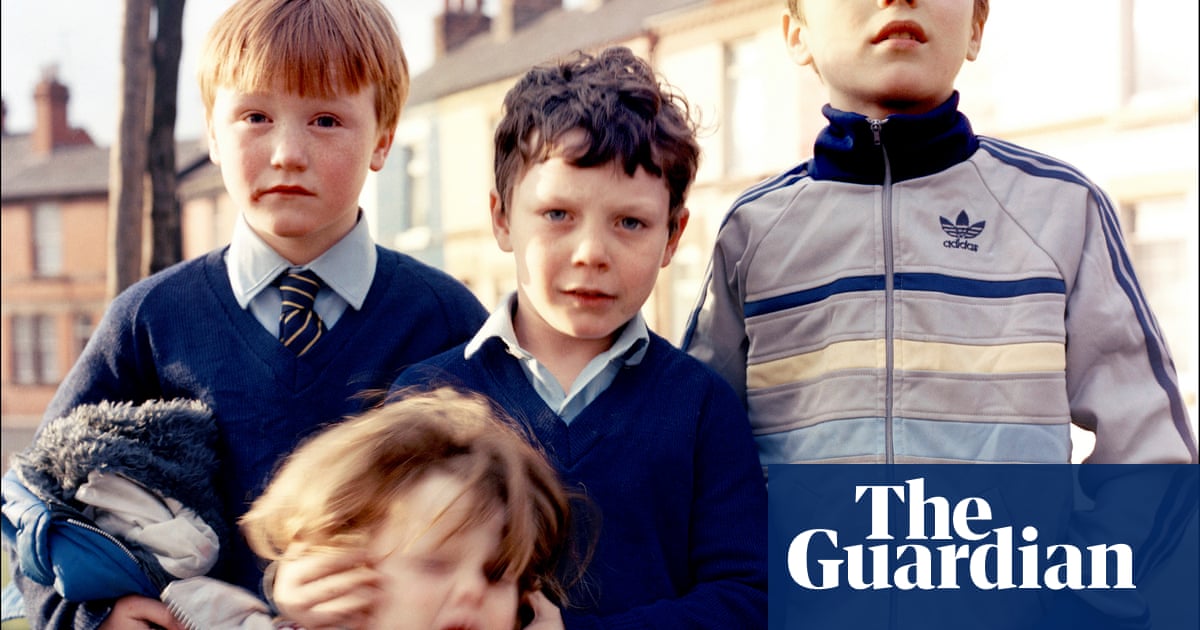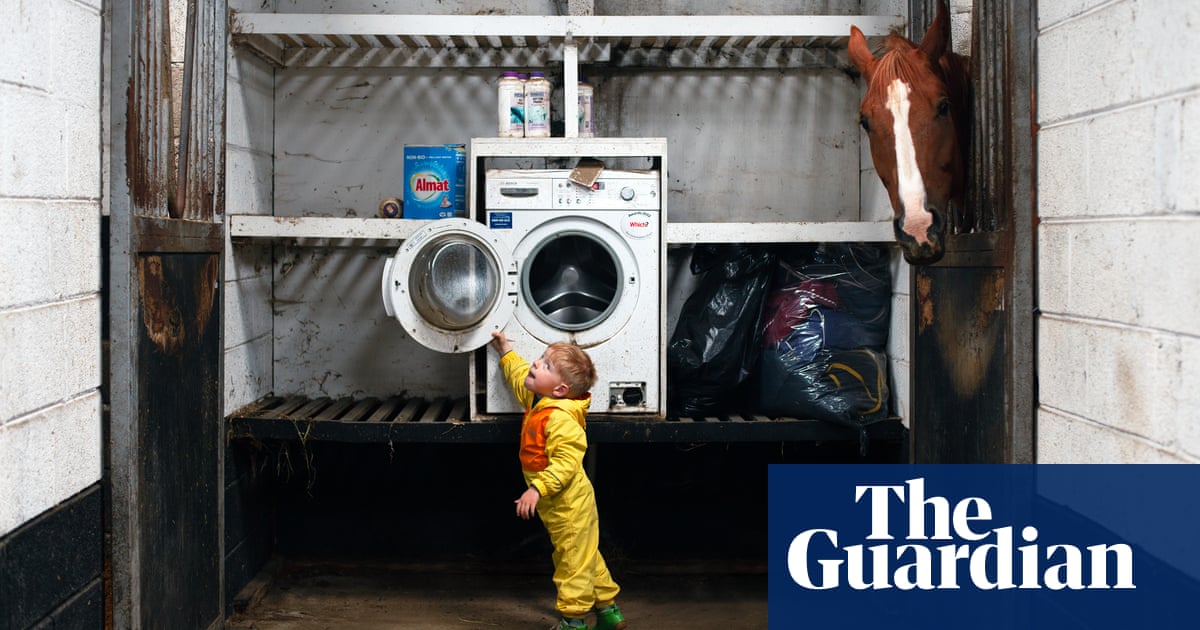
Over the years I’ve covered stories all over the world, as both photographer and writer, but as I was born in Bavaria and live in Munich, I’ve always been interested in the customs and way of life of my neighbours in the countryside. My first encounter with Bavarian fingerhakeln – finger wrestling – was about 10 years ago. I was fascinated by what I saw but it only occurred to me to do a story on the sport last year, which is how I ended up attending a championship event in Mittenwald.
The fingerhakeln tradition goes back hundreds of years. At one time, Bavarian woodcutters used the method to settle disputes. Now it’s an organised sport with five major championships every year. Opponents sit on stools either side of a table, and each hooks one of their middle fingers into a leather loop. The table has lines drawn at the edge, and the aim for each competitor is simply to pull their opponent’s middle finger over the line.
The players are often farmers or mechanics who work in the countryside, and they start preparing months before the first matches in the spring. I did some research and found the defending champion, a machinist called Josef. A couple of days before the main event I went to watch him train in his workshop. He and his brother had attached a pulley to the edge of a table and were taking it in turns to lift a 52kg concrete block with their middle fingers. Josef explained that, during a bout, a finger might have to withstand up to 200kg of pressure. When he shook my hand it felt like gripping a bear’s paw. There were also smaller blocks of 10 or 20kg used by Josef’s children, who had started training aged six or seven.
On the day of the championship, I spent many hours in the gymnasium, where the audience were seated at picnic tables eating pork and dumplings and drinking beer. The 163 competitors were all male, and most of the onlookers too. Almost everyone was wearing a traditional Bavarian costume complete with Alpine hat. Championship events have various age and weight categories, with the children competing first. Everyone taking part was from Bavaria, mostly from nearby villages, and as far as the competitors and crowd were concerned, there was nothing exotic about what they were doing.
Josef and his brother had been men of few words, and this was also true of the other finger wrestlers I spoke to. I don’t ask too many questions, or judge people. By just being there and watching and showing interest, I build trust. I also avoid sensational coverage.
Once the referee says “Zieht!” (“pull”), each bout typically lasts only a few seconds. As well as strength, focus and stamina, poise is required, with competitors trying not to show any pain. A true champion would rather have his arm torn out than give up, but soon one of the opponents lets go and flies into the arms of the catcher sitting behind him. These moments were the highlights of the contests and I had to anticipate who would let go first, and react lightning-fast to catch their moment of defeat.
At the end of the championship Josef remained undefeated, but that’s not him winning in this picture. These two were mediumweights like him but I’m not sure who they were. There were over 400 bouts that day! The lighting wasn’t good, so I had to use a flash, and I didn’t want the perspective to be from below, so I held the camera as high above my head as I could. Luckily my arms are long.
Angelika Jakob’s CV
Born: Munich, 1953.
Trained: Self-taught.
Influences: “Diane Arbus, Sebastiao Salgado, Martin Parr, Nikita Teryoshin.”
High point: “My many worldwide reports for the World Wide Fund for Nature. And now being a finalist in the Sony world awards.”
Top tip: “Be respectful and open-minded wherever you are.”
Angelika Jakob is a finalist in the professional competition of the Sony world photography awards 2024 exhibition at Somerset House, London, 19 April to 6 May












